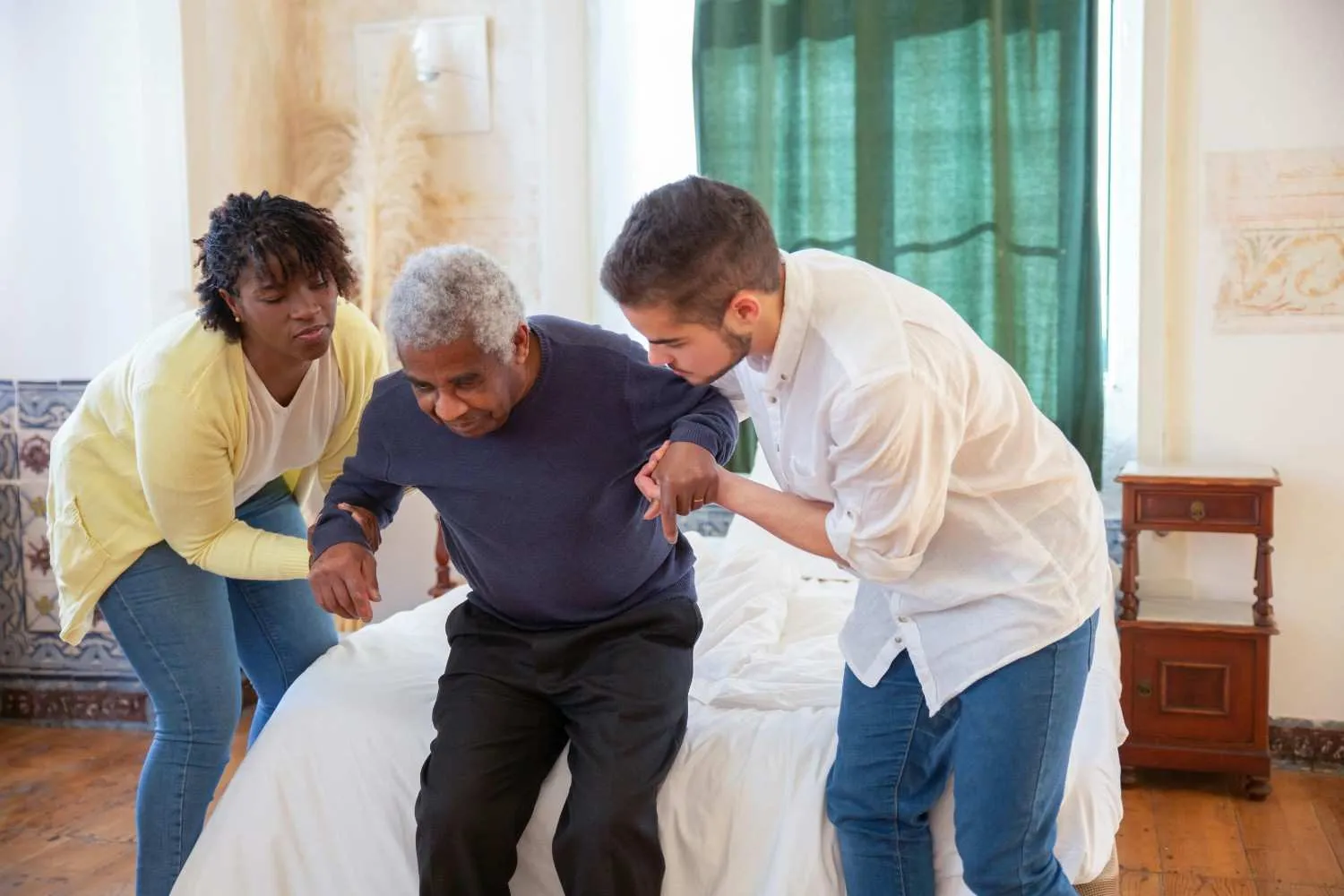There are several unpleasant aspects of delivery, and one of them is virtually always a result of the first vaginal delivery: ripping. Since vaginal tearing occurs so often, it is critical to normalize the concept and not fear it.
How to prevent tearing during birth is a common concern among expecting mothers, and there are several techniques and positions that can help reduce the risk of perineal tears.
Vaginal tears occur in about 90% of women during labor. Tiny tears are so common (99% of all are minimal) and heal so quickly that they appear to be a natural part of the delivery process.
Despite this, most women are terrified of tearing during childbirth and wish to prevent it at all costs.
While some vaginal tearing is unavoidable, lessening the probability of major vaginal trauma is feasible.
So this article will guide you to prevent vaginal tearing during childbirth; continue reading to know more about it.
Read Also: 7 Ways to Maintain Vaginal Health
 A vaginal tear is a laceration of the perineum (the region between the vagina and the rectum) that can develop during vaginal delivery. The tears were natural, which means no surgery was performed.
These can happen when a pregnant woman actively pushes or when uncontrolled uterine contractions deliver the baby.
During delivery, the vagina must expand sufficiently to enable a baby with a head the size of a melon to pass through. The vagina will extend just enough without ripping, but tears do occur often.
Also Read: #NotSoShy: Vaginismus - A Vaginal Disorder
A vaginal tear is a laceration of the perineum (the region between the vagina and the rectum) that can develop during vaginal delivery. The tears were natural, which means no surgery was performed.
These can happen when a pregnant woman actively pushes or when uncontrolled uterine contractions deliver the baby.
During delivery, the vagina must expand sufficiently to enable a baby with a head the size of a melon to pass through. The vagina will extend just enough without ripping, but tears do occur often.
Also Read: #NotSoShy: Vaginismus - A Vaginal Disorder

What is vaginal tearing?
 A vaginal tear is a laceration of the perineum (the region between the vagina and the rectum) that can develop during vaginal delivery. The tears were natural, which means no surgery was performed.
These can happen when a pregnant woman actively pushes or when uncontrolled uterine contractions deliver the baby.
During delivery, the vagina must expand sufficiently to enable a baby with a head the size of a melon to pass through. The vagina will extend just enough without ripping, but tears do occur often.
Also Read: #NotSoShy: Vaginismus - A Vaginal Disorder
A vaginal tear is a laceration of the perineum (the region between the vagina and the rectum) that can develop during vaginal delivery. The tears were natural, which means no surgery was performed.
These can happen when a pregnant woman actively pushes or when uncontrolled uterine contractions deliver the baby.
During delivery, the vagina must expand sufficiently to enable a baby with a head the size of a melon to pass through. The vagina will extend just enough without ripping, but tears do occur often.
Also Read: #NotSoShy: Vaginismus - A Vaginal Disorder
How to Prevent Vaginal Tearing During Childbirth?
Here are tips to lessen the likelihood of vaginal tearing during childbirth:
Preparing your body -
It may seem easy, but preparing your body for labor is essential. Labor is not simply a peak physical performance; body regions will do something they have never done before. With the duration that modern women spend resting and not moving, they must incorporate exercise into their everyday routines throughout pregnancy. Workout increases circulation, which increases skin suppleness. Orgasms can increase tissue health by boosting circulation to the perineum and vagina. Skin and muscular health are aided by proper diet and hydration. Incorporate many healthy fats, particularly omega-3s (found in fish, chia seeds, walnuts, and pumpkin seeds) and grass-fed or free-range lean protein. A varied vegetable diet completes a balanced diet and provides vitamins and minerals like E, C, and zinc. They will allow your body to stretch and recuperate during and after labor. Read Also: #LadiesAndBabies: All You Need To Know About Water Birth DeliveryDoing Pelvic floor exercises -
Pregnant women are often advised to perform pelvic floor exercises to improve the strength of the muscles in the pelvic region. The notion is that the pelvic floor muscles will snap back into place following birth, making incontinence less probable. During the phase of labor, you wish your pelvic and vaginal to expand and your muscles to relax to allow the baby to descend as far as possible. Squats and pelvic floor exercises can be used together to stretch and improve the coordination of the pelvic floor muscles with other muscles throughout the body. Practicing to relax the pelvic floor muscles is also essential, and doing pelvic floor exercises correctly will help you identify and relax those muscles.Perineal massage -
The perfect answer to the question "How to prevent tearing during birth" One effective way to prevent tearing during birth is by performing regular perineal massages in the weeks leading up to delivery, as this can help increase the elasticity of the perineal tissue. It has been shown that preparing the perineum during pregnancy reduces the chance of tearing in mothers giving their first vaginal delivery. If you are uncomfortable with perineal massage, remember that it is unnecessary. While it does lower the risk of perineal damage, it appears that the lower risk is linked to a lower chance of needing an episiotomy. Experts are unsure why this is the case, but one suggestion is that women who choose perineal massage are more eager to prevent an unneeded episiotomy. Episiotomies increase the likelihood of having stitches; hence fewer episiotomies equal less chance of needing stitches. Read Also: IVF Complications and Birth DefectsLaboring in water -
The ideal relaxation idea is immersing oneself in a huge warm bath. Warm water offers several advantages during labor. Although a Cochrane Study in 2009 found no differences in tearing between water and land births, many midwives and mothers swear by warm water relaxing perineal tissues and lessening the feeling of the crowning period. Also Read: Epidural Anesthesia - Manage Labor PainBirth Positions -
The posture that holds while pushing has a major impact on whether or not you will tear. Lying down, lithotomy position (laying down with legs raised), or semi-reclining poses put a lot of pressure on the spine and groin area, reduce the size of the pelvic region, and raise the risk of tears. The greatest position for giving birth to the baby is the one you naturally pick for yourself and feel most comfortable in. Women who can move around throughout labor will discover a posture that allows them to cope with pains at each stage. Some women prefer to float freely in water, while others prefer to be firmly planted on the ground. The following are the least postures for the perineum:- On hands and knees, on all fours.
- In a supportive standing, sitting, or kneeling position, lean forward.
- Lying on your side.
- While both squatting and kneeling are good vertical postures, if your knees are too wide apart, the perineum is extended laterally, posing the possibility of tearing.
Breathing instead of pushing a baby out -
During the pushing stage, the fetal ejection reflex moves the baby out of the uterus and into the vagina. When you get the sensation of pushing, the uterus is already contracting and pulling the baby down. To give birth, you do not have to push your entire body while holding your breath. This limits the oxygen available to you and your baby and tenses the muscles rather than relaxing them. The perineum begins to widen out and expand as your baby's head pushes on the pelvic floor. The phase is sometimes very intense, and you may have to bear down to get the baby out immediately. This method reduces pelvic floor pressure and may result in a slower, more controllable birth. Read Also: Childbirth: 10 most common childbirth complicationsUsing warm compresses -
A warm flannel or compresses applied to the perineum during the crowning period might help minimize severe tearing. The warmth improves blood flow to the region and may be relaxing when combined with counter pressure. Many women find the warm compresses soothing, while others want their carers to remain hands-off.Avoid having an episiotomy -
An episiotomy is a surgical incision on the perineal skin and muscle to increase the vaginal opening. Episiotomies were originally used to reduce the risk of injury to mother and baby, like tears, brain injury to babies, pelvic floor tears, etc. Episiotomies no longer protect the perineum during delivery and increase the risk of a third or fourth-degree tear. The baby's head rises after the cut, causing the wound to tear more into the muscle. Tears will heal significantly faster than episiotomies. The scar tissue after an episiotomy may be weaker, but it will not limit the capacity of the perineum to expand in future births. Read Also: Vaginal Discharge: What's not normal?Conclusion -
After childbirth, it is critical to manage any vaginal rip with caution. We also recommend using a stool softener and drinking lots of fluids to avoid constipation and uncomfortable stool as you recuperate from your injury. Many women also find that using ice packs and witch hazel wipes might assist with the itching and pain that comes with sutures. It is critical to share any problems with the medical provider to verify that you are healing properly following delivery and a vaginal tear. If you observe any unpleasant swelling, redness, irritation, or odor while the tear heals, ensure you aren't suffering from an infection. If you're expecting a child or healing from a vaginal tear, be prepared, try birth positions, and get help from your doctor. Also Read: How to get rid of Vaginal odor at Home?
Reviewed by







